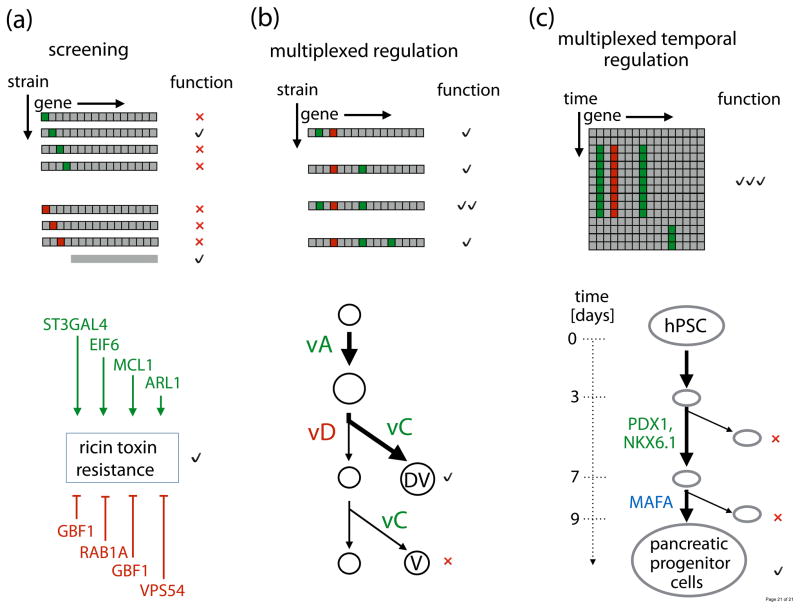Fig. 3.
Applications of transcriptional regulation with dCas9. (a) Gain of function (green) and loss of function (red) monogenic screening. Below is an example of ricin toxin resistance screen [19]. (b) Combinatorial screening combining multiple transcriptional perturbations. Below is an example of this approach to maximize deoxyviolacein (DV) production relative to violacein (V) by upregulating vA and vC (green) and downregulating vD genes (red) [24]. (c) Reversible perturbations to multiple genes. Below is an example of using a conditionally degradable dCas9-based activator to differentiate human pluripotent stem cells to pancreatic progenitor cells. Upregulation of PDX1 and NKX6.1 (green) during days 3–7 followed by activation of MAFA (blue) during days 7–9 leads to differentiation [32].

